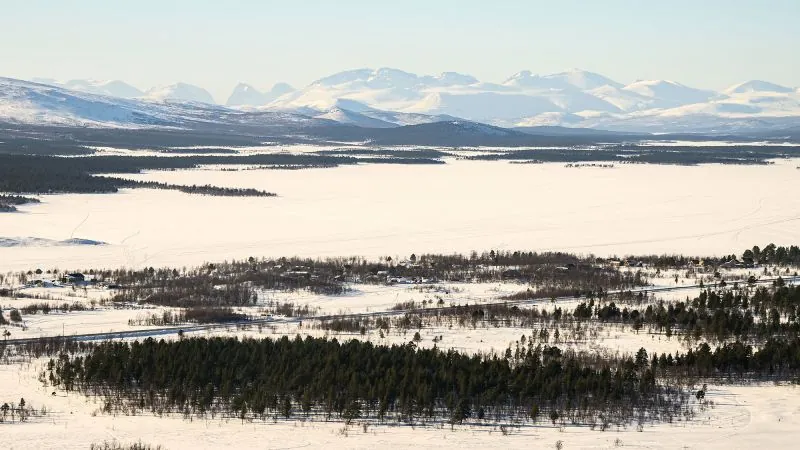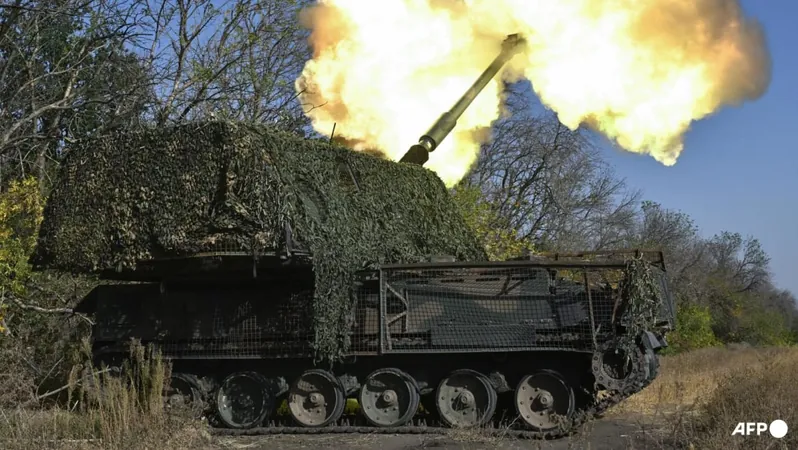
Uncovering Hidden Treasures: The Surprising Magma in Extinct Volcanoes Holds Key to Our Clean Energy Future!
2024-09-24
A Groundbreaking Discovery
A groundbreaking discovery reveals that a unique type of magma found in extinct volcanoes around the globe may harbor vast amounts of rare earth elements—essential components for powering the clean technologies of tomorrow, such as electric vehicles and wind turbines. This revelation comes from a report released earlier this week, igniting hopes of reducing the world's reliance on harmful fossil fuels.
Understanding Rare Earth Elements
So, what exactly are these rare earth elements? Comprising metals like lanthanum, neodymium, and terbium, these materials are pivotal in the shift towards sustainable energy. Despite their name, rare earths aren't as rare as they seem; the difficulty lies in extracting them due to their low concentrations in natural deposits. With the demand for these elements skyrocketing, countries worldwide are racing to secure new sources, especially in light of China’s dominance in the supply chain.
Promising Pathways for Extraction
According to Michael Anenburg, a research fellow at the Australian National University and co-author of the study, this research opens a promising pathway for rare earth extraction. The team's exploration was sparked by a major discovery last year in Kiruna, Arctic Sweden, where an enormous deposit of rare earth elements was uncovered in an ancient iron-ore rich volcanic area dating back around 1.6 billion years.
Geological Questions
This intriguing find led scientists to ponder whether similar processes could occur in other iron-rich volcanoes. Anenburg elaborated, “The question was whether this occurrence was a geological accident, or if there is something fundamentally special about these volcanoes that accounts for the abundance of rare earth elements.”
Challenges in Studying Extinct Volcanoes
However, studying these volcanoes presented significant challenges; many are extinct and incredibly rare. As Anenburg noted, “We have never seen iron-rich magma erupt from an active volcano, but we do have evidence that some ancient volcanoes experienced this rare type of eruption.”
Simulating Geological Phenomenon
To simulate this unique geological phenomenon, researchers created their own magma chamber using synthetic rock mimicking the composition of the extinct volcanoes. By placing this rock in a high-pressure furnace and subjecting it to extreme heat, the team discovered that the resulting iron-rich magma is capable of absorbing rare earth elements from its surroundings with astonishing efficiency—up to 200 times more effective than typical magma from active volcanoes.
Potential Locations for Rare Earth Deposits
These promising findings suggest that untapped rare earth deposits may lie within extinct volcanoes in various regions, including the United States, Chile, and Australia. Many of these locations are already being mined for iron ore, turning this discovery into a potential “win-win” scenario, as companies could both enhance their operations and alleviate the need to exploit new resources.
Innovative Research Approach
This innovative study takes a novel approach, as noted by Lingli Zhou, assistant professor at Vrije Universiteit Amsterdam, who stated, “They start from the laboratory and then simulate conditions found naturally, which helps us understand how these rare earths could accumulate in localized regions of the Earth's crust.”
Environmental and Ethical Considerations
The results could prove invaluable for geologists in identifying economically viable deposits, thereby diversifying the rare earth supply chain. However, it's crucial to remember that rare earth mining is fraught with environmental challenges due to the toxic chemicals often used, leading to soil and groundwater contamination. Additionally, human rights violations, including allegations of child labor, have been reported in the supply chains.
The Path Forward
As the conversation around rare earth resources continues, some experts advocate for a stronger emphasis on recycling existing materials rather than expanding mining operations. This perspective aligns with the growing need for a sustainable and ethical approach to securing the resources vital for our future. As we venture forward, the potential of this newly discovered magma could play a pivotal role in shaping a cleaner, more responsible energy landscape.



 Brasil (PT)
Brasil (PT)
 Canada (EN)
Canada (EN)
 Chile (ES)
Chile (ES)
 España (ES)
España (ES)
 France (FR)
France (FR)
 Hong Kong (EN)
Hong Kong (EN)
 Italia (IT)
Italia (IT)
 日本 (JA)
日本 (JA)
 Magyarország (HU)
Magyarország (HU)
 Norge (NO)
Norge (NO)
 Polska (PL)
Polska (PL)
 Schweiz (DE)
Schweiz (DE)
 Singapore (EN)
Singapore (EN)
 Sverige (SV)
Sverige (SV)
 Suomi (FI)
Suomi (FI)
 Türkiye (TR)
Türkiye (TR)